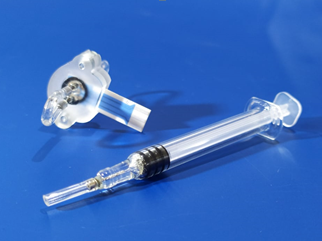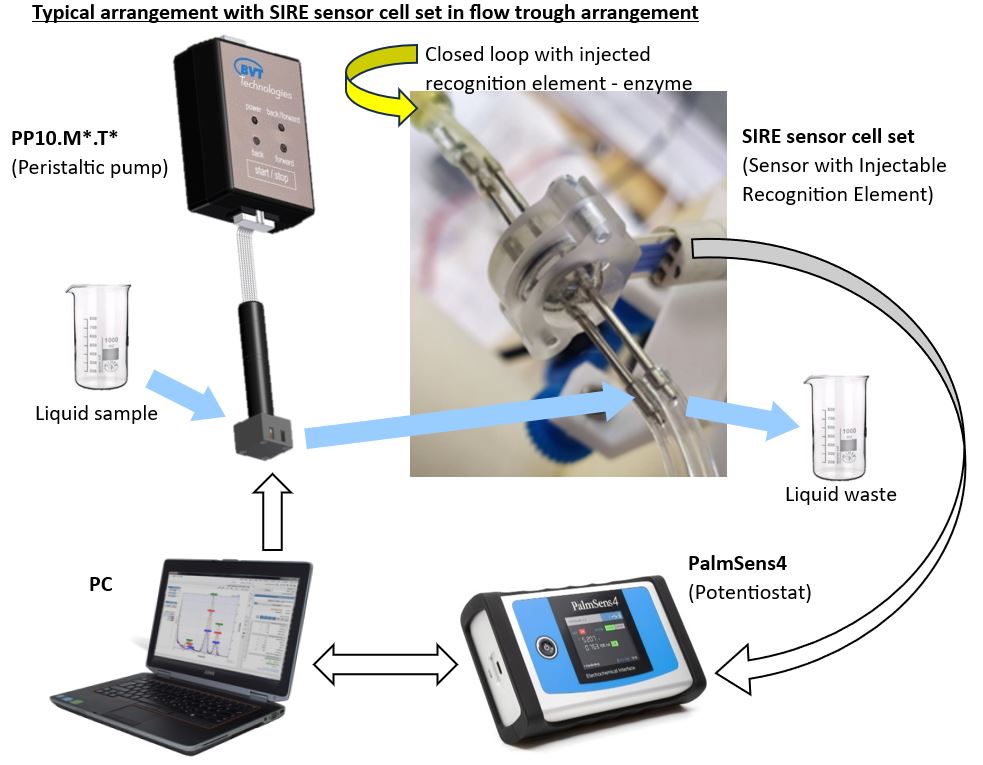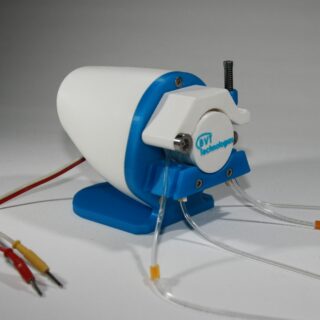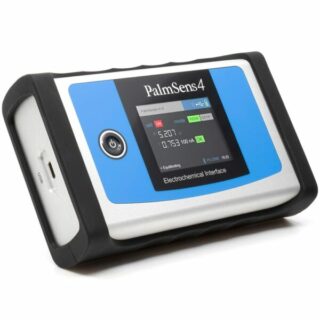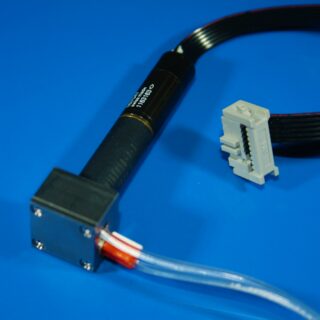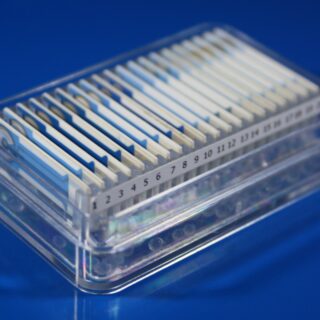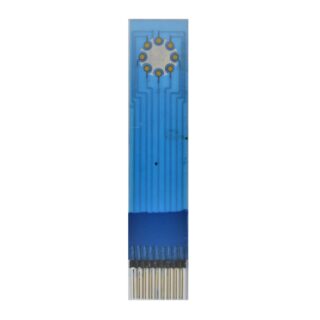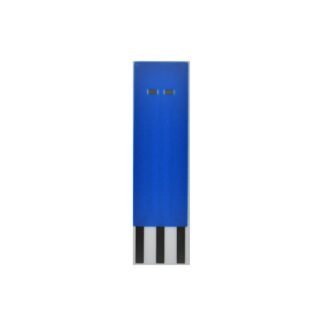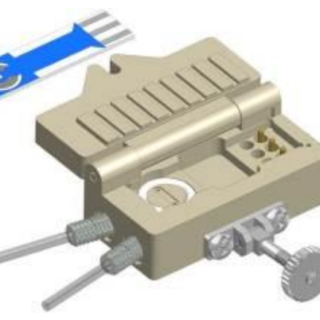Category
- CUSTOMER SERVICES
- NEW PRODUCTS
- Sensors and electrodes
- Custom made and Modified Screen Printed Electrodes
- Stirrers
- Cables and connectors
- Cell
- Potentiostats
- Manual Screen Printer
- Minithermostat
- Pumps
- Accessories
- Kits & Sets
- Discounted SPEs (at a reduced price with visual defects/inconsistancies, but fully functional)
SIRE Sensor Cell Set (Sensor with Injectable Recognition Element)
The SIRE Sensor Cell Set consists of a sensor with an integrated non-removable specialised chamber.
The set also contains a syringe which will allow the injection of the recognition element (Enzyme).
The SIRE Sensor Cell uses the concept of soluble enzymes into a reaction chamber separated from the sample by a semi permeable dialysis membrane. The analyte (for example maltose), enters into the reaction chamber by diffusion. The analyte reacts with the recognition enzymes creating H2O2 which is oxidized on a screen printed Pt electrode. The current corresponds to the amount of analyte.
* For this product, we recommend our customers use the Training Service from BVT.
(https://bvt.cz/produkt/offer-of-long-term-automated-measurements-on-bvt-apparatus/)
You may also like…
-
PME011 Microdialysis Catheter Microeye
Read moreMicrodialysis catheter is provided with a special membrane which produces a “plasma-like” sample without the need for blood centrifugation.
It enables “plasma-like” samples taking and continuous monitoring of low-molecular substances in circulating blood without withdrawing blood from the patient. It offers virtually real-time information. Samples can be collected for off-line analysis if required. This catheter is easy to use and reduces risks of contact with blood borne pathogens. The MicroEye is intended for intravenous use for periods up to 48 hours and is inserted via 18G blood catheter.
The range of substances that can be monitored using this catheter
- Electrolytes (such as potassium, magnesium etc.)
- Energy metabolites (glucose, lactate, pyruvate, etc.)
- Amino acids (glutamate, GABA, etc.)
- Hormones and neurotransmitters (dopamine, serotonin, etc.)
- Inflammatory mediators and growth factors (cytokines, etc.)
- Drugs and their metabolites (unbound “free fractions and /or total
-
2PP.T Dual Channel Peristaltic Pump
Read moreThe peristaltic pump 2PP.T* is simple device for routine laboratory use. The pump has two channels. The flow is in one direction.
The lifetime of tubing is optimized to maximal value. The pulsation is minimized for flow cell FC2.
The integrated shaft enables fastening by standard laboratory clamps. The pump is supplied by max 12V. The rotation speed is controlled by voltage. The control unit is delivered with pump.
The force on the tubing is adjusted by screw a spring. The pulsation damper can be ordered separately.
-
PalmSens4
Read moreThe PalmSens4, is a USB and battery powered Potentiostat, Galvanostat, and optional a Frequency Response Analyser (FRA) for Electrochemical Impedance Spectroscopy (EIS).
Compact, versatile and powerful
- (Bi)Potentiostat / Galvanostat / Impedance Analyzer
- FRA / EIS: 10 μHz up to 1 MHz
- 9 current ranges: 100 pA to 10 mA
- 18-bit resolution
- Bluetooth or USB connection
The PalmSens4 has a large potential range (-5V to 5V or -10V to 10V) and current range (100 pA to 10 mA) with a high resolution and low noise. The economical PalmSens4 is a complete laboratory instrument but its compact and rugged design makes it also ideal for field work.
Connecting via Bluetooth guarantees a perfectly floating measurement.
More information can be found through the link: https://www.palmsens.com/product/palmsens4/
Configurable
PalmSens4 comes in different configurations:
- ±5 V or ±10 V potential range
- EIS/FRA with maximum frequency of 100 kHz or 1 MHz
- optional BiPotentiostat module for second WE
- optional iR-Compensation
Standard included
- Rugged carrying case
- High quality, double shielded cell cable with
2 mm banana connectors for Working, Counter, Reference electrode and Ground - Crocodile clips
- Dummy cell
- USB cable
- Manual and Quick Start document
- PSTrace software for Windows
-
PP10.M*.T* Peristaltic pump
Read moreThe peristaltic pump PP.M10/*.T* consists of miniature motor with planetary gear and stainless body of peristaltic pump.
Optionally the motor is equipped with encoder. The pump has one channel. The flow is in one direction. The pump is designed for extremely small applications such as medical or military applications. It can be used in hand-held devices. The lifetime of tubing is optimized to maximal value. The pulsation is minimized for flow cell FC2. The device is supplied by USB connection with PC.
Related products
-
STK Starting kit
Read moreStarting kit STK.S
Set of twenty electrochemical sensors with a simple connector to find the best one to fit your application.
Starting kit is the set of twenty different electrochemical sensors to find the best one to fit your application. Starting kit contains 10 types of electrochemical sensors (2 sensors of each type), simple sensors connector and sensors box with numbered positions and silica gel.
-
AC9C Electrochemical sensor
Read moreAmperometric sensor with an array of 8 working electrodes and 1 common reference electrode made by thick film technology with integrated connector
Dimensions: 59.0 x 12.7 x 0.63 mm
WE material: Au/Pt, Au, Pt, Ag, C
The sensor is formed on a corundum ceramic base. On to this surface eight working electrodes, and the reference electrode are applied. The electrodes can be made of variety of materials (see below). At the end of the sensor there is an integrated connector. It is connected with the active part by the silver conducting paths which are covered by a dielectric protection layer. Different bio-chemically active substances can be immobilised on the working electrodes of the sensor.
-
CC3.WSP Electrochemical sensor
Read moreA conductivity sensor with two active parts made by sputtering with interdigitated structure of electrodes
Dimensions: 25.4 x 7.26 x 0.63 mm
WE material: Au
The sensor is formed on a corundum ceramic base. Onto this surface two interdigitated structures of electrodes are applied. The electrodes are applied by sputtering. At the end of the sensor there is a contact which is connected with the active part by the gold conducting path which is covered by a polymer dielectric protection layer. A bio-chemically active substance can be immobilised on the electrodes, one interdigitated structure, the second structure is reference.
-
FC4.TL.* PEEK Flow Cell
Read moreThe FC4.TL flow cell is made of PEEK and enables the use of Screen printed sensors in a flow through arrangement.
It has teflon endings permitting a fully compatible connection to chromatography tubing.
The flow cell is suitable for sensors of type AC1, AC2, CC1, CC2 and CC3.
The Screen printed sensor is inserted into the slit of cell and tightened by closing of the door. The cell ensures the wall-jet flow around the working electrode and it is optimised so that no air bubbles cumulate in the cell. The cell contains also the contact and output cable.
With the sensors enclosed in a flow cell, it is possible to measure semi-automatically or automatically using a pump or liquid switch for sample supply. Under such conditions, maximum measurement reproducibility is ensured.

